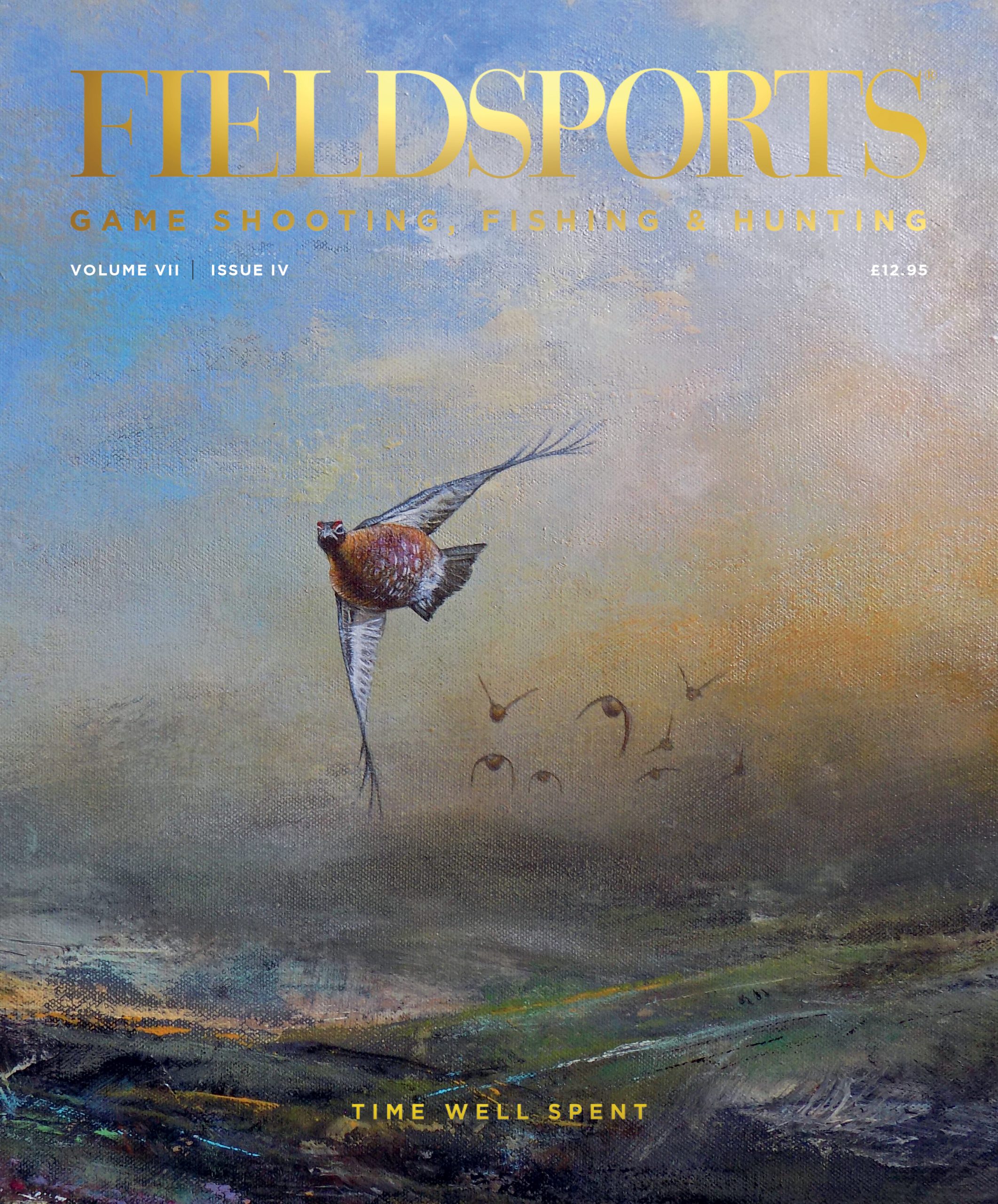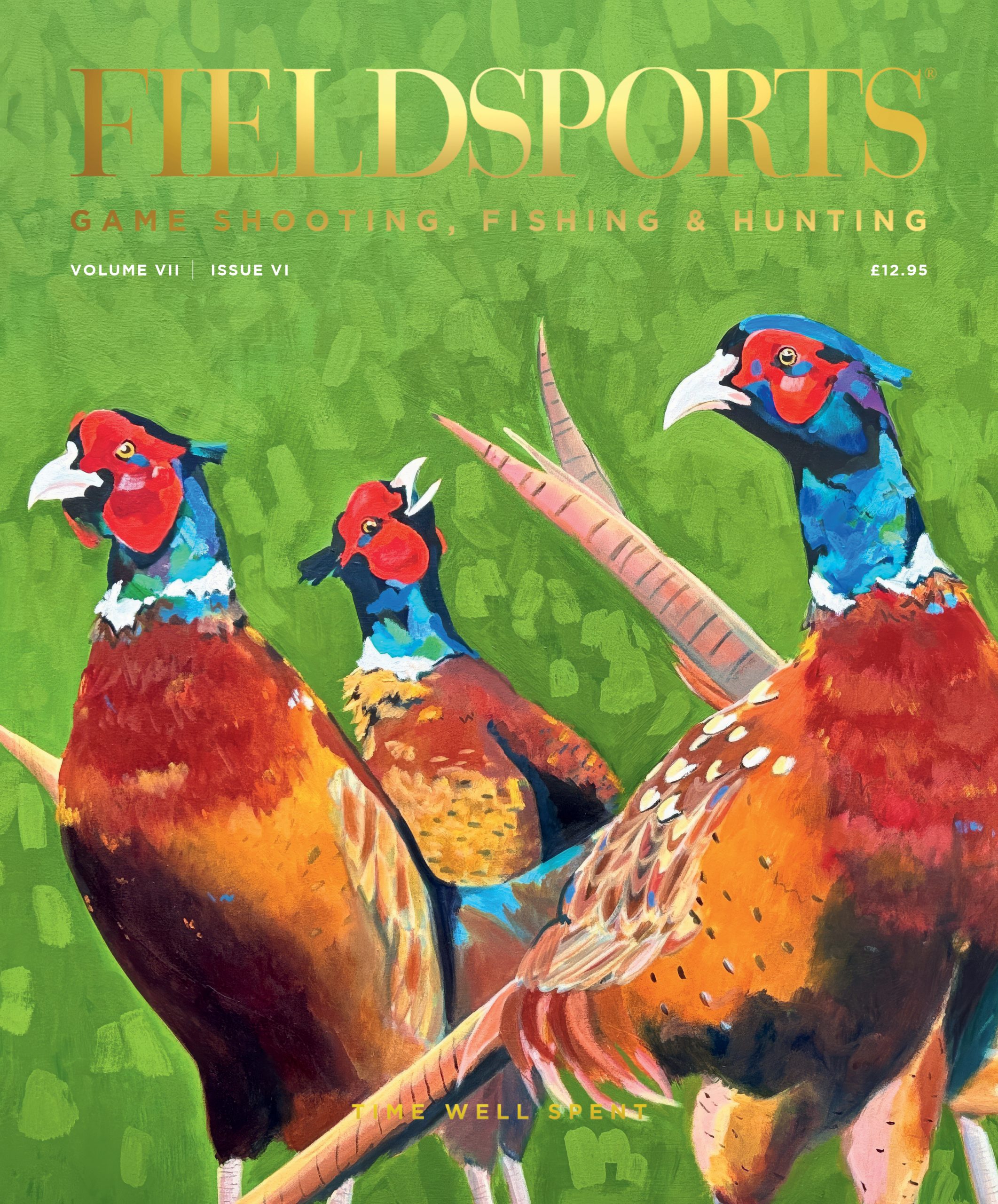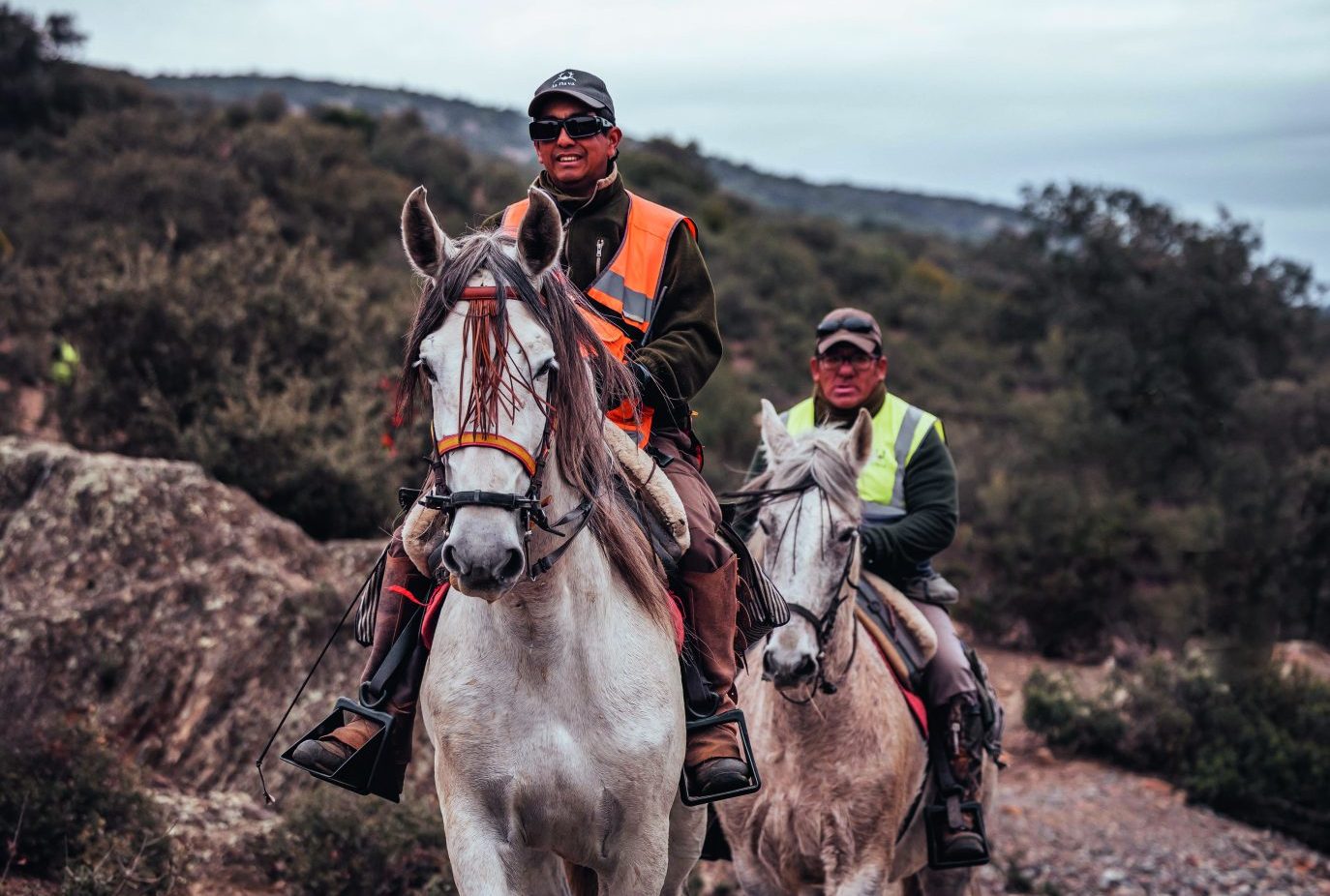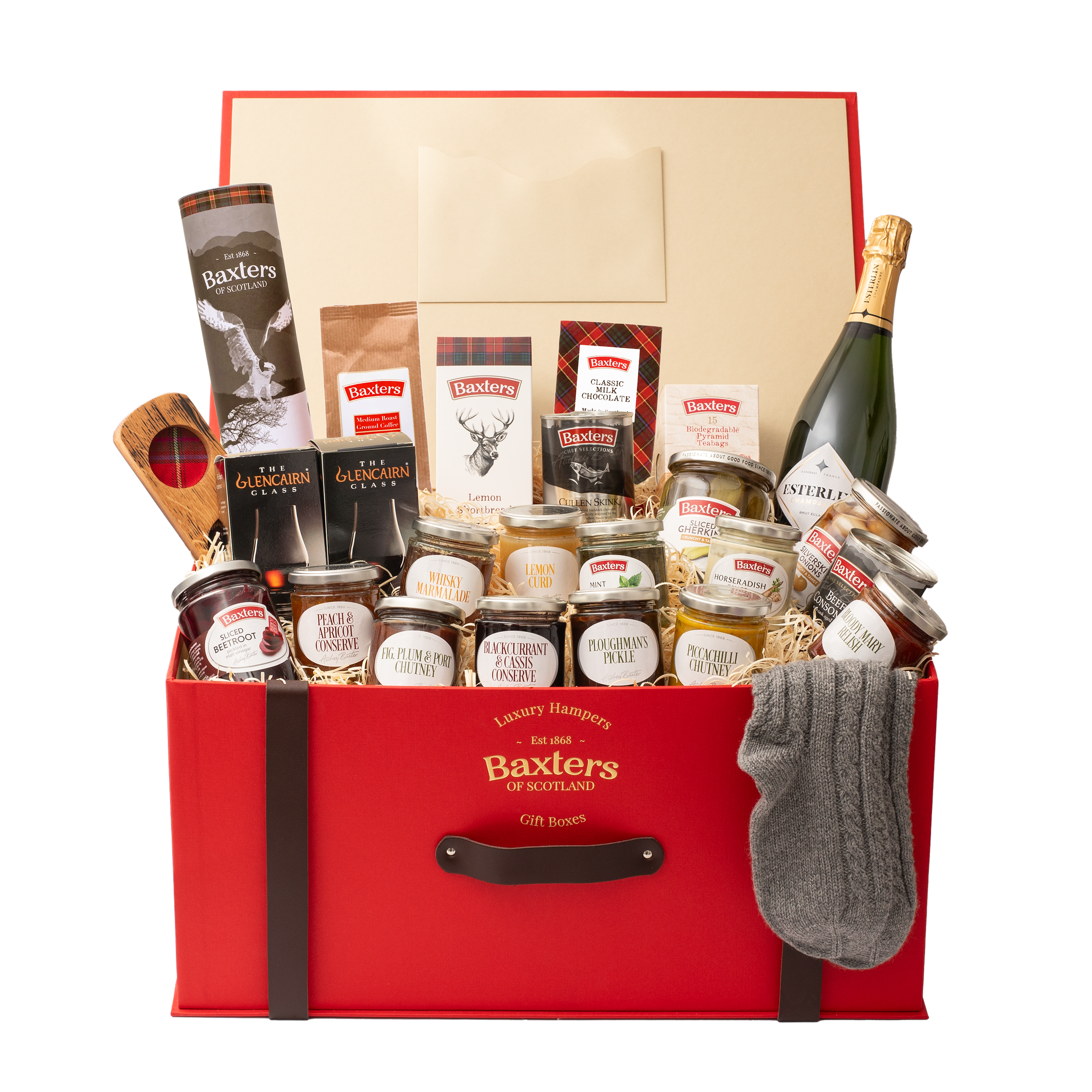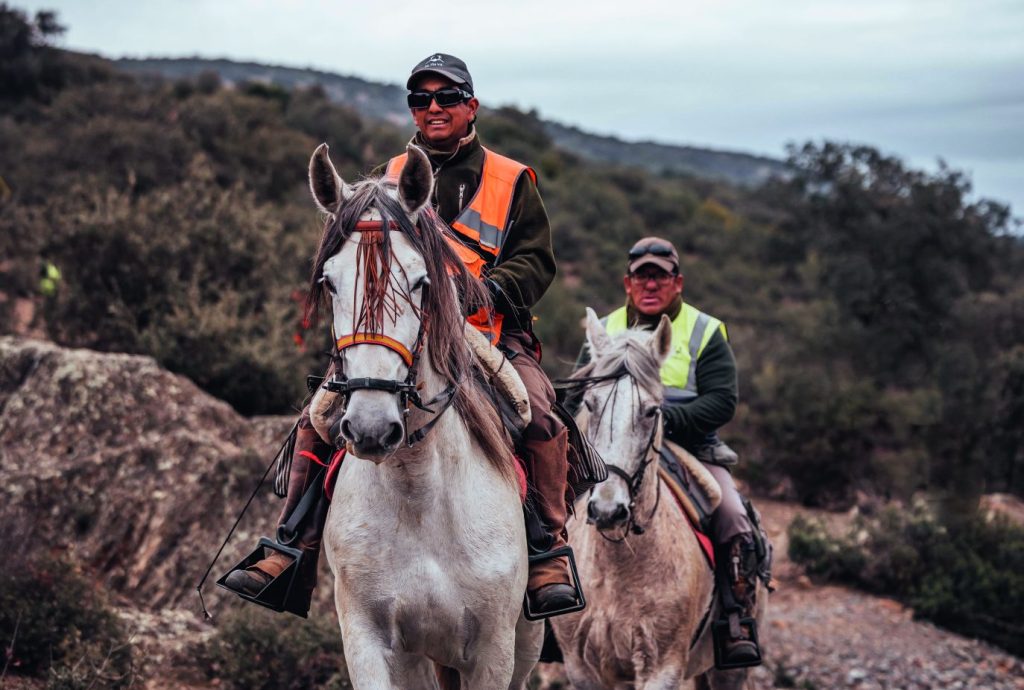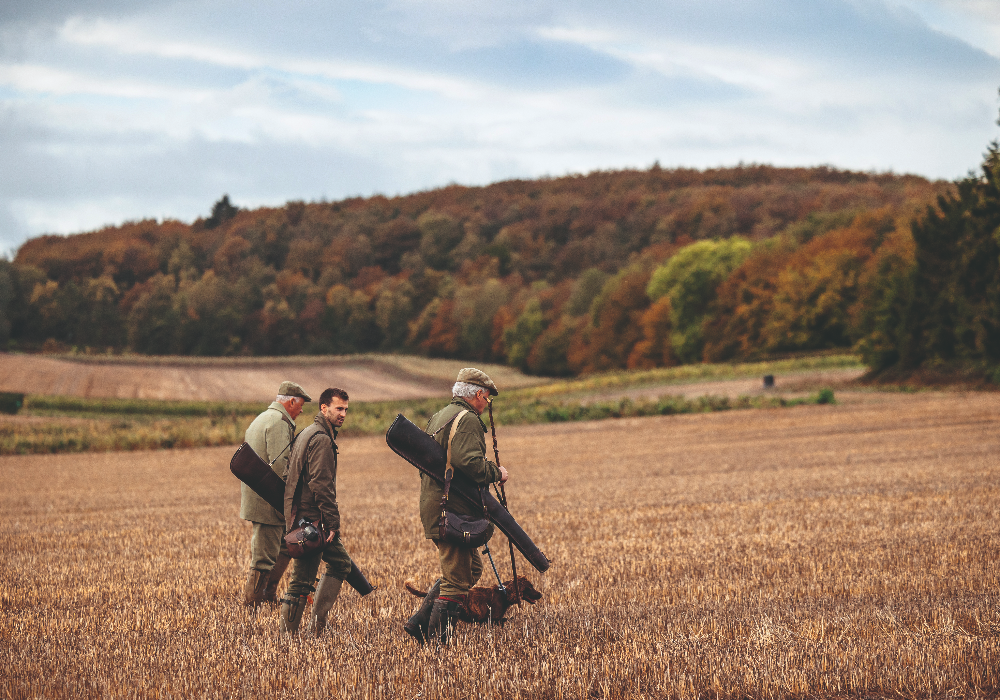Great Lemhill: an award-winning grey partridge shoot
Having spent many years creating the perfect habitat for grey partridge, George Ponsonby’s team won Gold at the Purdey Awards for Game + Conservation in 2024. We went to find out why this inspirational wild bird shoot has been so successful
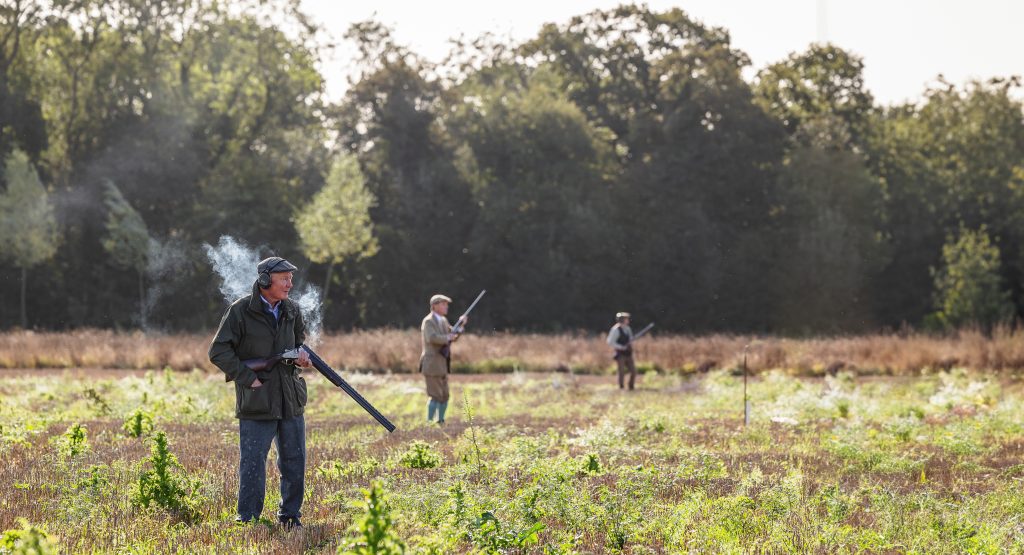
I’ve never felt so compelled to do a shoot report justice more than that of George Ponsonby’s sole English partridge day of 2023 on the Great Lemhill and Greenhill shoot at the end of September.
As we all know, grey partridge shoots are increasingly rare; across the whole of the UK this year one can count the number of days held on two hands and maybe a few toes, though not for the lack of trying. This day was utterly brilliant, unique and in the best possible conditions, and people travelled far and wide to be part of it. But more than all that, it’s the graft, determination, passion and investment by so many on the other 364 days in a year that finds me duty bound.
Actually, 364 days of work is under egging it. More like 2,370-something days is more accurate, dating back to April 2017. For this was when George, having taken on the tenancy – and most importantly the sporting rights – of another farm in his local vicinity a couple years earlier, decided he was going to make something of his growing obsession about this special game bird.
“While I requested the shooting rights on every farm acquired over 20 years or so, I never did anything with them. When I took on Greenhill, though, I knew I finally had enough land to start up a grey partridge shoot, which had become a fascination and a passion,” he muses. “More to the point, I was so fed up with listening to everyone saying it wasn’t possible, and I just had to give it a go.”
The first spring counts in 2017 revealed just 17 pairs and a single cock of English partridge. Fast forward to this autumn and the counts tallied at 109 pairs with 595 total head of greys (enough for a 40-brace day). Such an increase in population in such a short space of time has been a mammoth feat. Of course, it is not just the greys that have documented a major increase over this land but all manner of songbirds such as yellowhammers and linnets, other ground-nesting birds such as lapwing, plus hares, bees, butterflies and insects, red-listed wildflowers – I could go on. It is not surprising that the estate was awarded the top spot in the Purdey Awards in February 2023 for their exceptional conservation contributions and success; an incredibly proud moment for George and the whole estate team.
Fundamental in getting to this stage required establishing a stable three-legged stool of conservation: habitat, predator control and a year-round source of food. There’s no real rest period between trapping, snaring, lamping predators, winter feeding, planting and restoring habitat, introducing beetle banks (they now have 12 and plan for five more by next spring) and flower margins, restoring hedgerows and more.
Much of the hands-on conservation work is conducted by keeper Niall Wright, who joined George from Peppering in March this year, and is cut from the same precious cloth as George’s former keeper of six years, Frank Snudden, who played a huge part in the estate’s success during that time. But beyond that it is a large team of farmers, volunteers and passionate country folk – such as photographer and grey partridge fanatic Tarquin Millington-Drake (whose grey partridge documentaries over the last four years have taken place here on the estate where he lives) who share the same vision that gets them over the line.
March to the end of July is the most intensive period for keepering duties. “It’s seven days a week, from sunrise till late every day with three of those days every week, maybe more, up until 1 or 2am when I’ll be lamping foxes. It is critical that during nesting time we offer as much protection as we can as this is when the greys – and other species – are at their most vulnerable,” Niall explains as he pulls out his phone and opens his notes. “Since coming here full-time,” he shows me his regimented list, “I have accounted for a fair few foxes, 65 weasels, 61 crows, 40 magpies, 201 rats and an array of other problem species. It is at this time I will also be monitoring the stewardship strips and game covers, checking they are growing correctly and replacing and re-establishing them where necessary. I think it was Joseph Nickerson who said to his farm staff that they had to think like a partridge, and that’s very true.”
Both George and Niall are adamant that the real secret to successful grey partridge ventures is a simple one. Everyone (owner, agent, farm manager, farm staff, gamekeeper) has to pull in the same direction. “All the farmers need to be involved and adopt the same mindset; that means no night work – the partridges don’t like that – and you need to be careful where to drive in May and June to prevent driving over nests, plus timings for planting cover crops and flower margins need to be spot on,” explains George. “We are very lucky to have the team we do.”
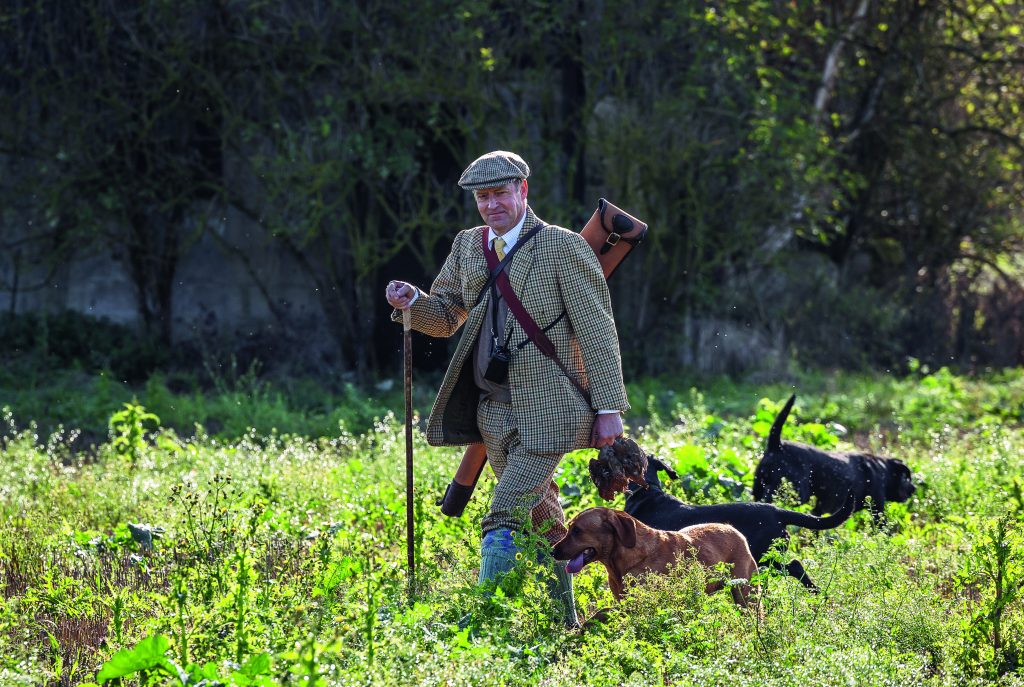
The measure of a year’s work
Once September comes around and after harvest, Niall conducts the autumn brood count, and with any luck a surplus stock means the invites start to circulate, and the excitement starts to build. And after my visit with just a camera in September I can see why: nothing compares to a day on the greys.
The excitement on this English partridge shoot was palpable – from the yard filled with likeminded keepers, friends and family, to the Guns at the drawing of pegs. People had travelled far and wide to be a part of the day. Making up the beating line were 56 beaters, made up of Niall’s former colleagues from Peppering in their estate tweeds, along with those from other English partridge shoots such as Stowell Park, Eastleach, Calmsden, Fonthill and more – if ever there was a dream team of beaters, this would be it. Then there were the seven pickers-up, two on the game cart, two driving tractors, three running catering and me, the photographer, creating a wonderful community.
As for the sport itself, coveys of English partridge star-bursting over tall hedgerows made a brilliant spectacle, which occurred many times over the nine drives that were shown on the day. The frantic and justifiably excited whistle blowing when the greys approach the Gun line makes it all the more intense and unique.
As Tarquin, one of the Guns on the day explains: “The uninitiated might look upon greys as low and consider the terrain flat and not that exciting, but they would be so wrong. They are extremely difficult. Totally unpredictable. One needs to be incredibly quick, waiting with the gun up for the whole drive to give you the best chance of taking a successful shot before they are gone. They are just amazing creatures and the most sporting of birds. Just look at the amount of people here who have come to support it – you wouldn’t get that for a normal day’s shooting.”
“I’m often asked why I chose to have a wild bird shoot and the answer is always simple,” George smiles, “It is just so much better sport. I am not excited about reared game at all – it is predictable. People shy away from the word ‘sport’, but it is what it is, and believe it or not I get as much enjoyment out of seeing them fly the other way having outwitted us / the beating team as I do having them fly over the line. Indeed, that unpredictability is everything; we have no idea if we will shoot 30 or 130. It is the same for our wild pheasant days, of which we have three to five each season too, which are brilliant.”
Living with Greys
As mentioned earlier, Tarquin lives on the estate and has spent the last four years documenting the species going about their business. On the final drive, we were in position to shoot the 23-strong covey of which he has spent so much time with and will make up the pages of his book launching in May 2024 titled Living with Greys.
He remarked: “People often ask how I feel about the greys I live with being shot. Now I have learnt to understand what is going on in the wider scheme of things, I know it is necessary to shoot them. If you get a barren pair that produce nothing, they take up critical territory and can push the healthy pairs out and off that ground, where they are no longer protected from predators etc. and only the real toughies survive. If you want to maintain a healthy population you need to thin them out carefully and shoot at the pair, not at the covey, if you have the choice.
“Grey partridge are incredibly resilient if given a chance, protective of their family and incredibly brave – they have on occasion gone to attack me or the car and will attack anything to protect their young. They are a brilliant indicator of the health of the countryside. If people look after greys like George, Niall and the rest of the team do, everything from insects to bees to songbirds thrives.”
Come the end of the day, with only a couple of Tarquin’s covey of 23 added to the bag, the team accounted for 40 brace of greys and 30 brace of wild redlegs. “I like to see a stock of 500, so leaving 515ish is perfect, giving us an optimal 100-125 pairs next spring for the size of the farm,” concludes George.
For Niall, it was a culmination of a lot of hard work which he was rightfully very proud and deserving of an evening off. The next day, I discovered, he was back to work, sexing and aging the bag to decipher the split of birds shot and gauge the quality of the remaining stock. There are big shoes to fill and he is doing so excellently.
Final word
For almost every shoot day invite, George writes a limerick to his guests which is an extra special touch. Here is a poem he wrote by way of thanks to Purdey for recognising the team’s work with this year’s Gold award…
To James Purdey I offer my thanks
For your award is as high as it ranks
To be told on good authority
That our shoot is such good quality
But remember: the endeavours were not mine, but all Frank’s.
Related Articles
Get the latest news delivered direct to your door
Subscribe to Fieldsports Journal
Elevate your experience in the field with a subscription to Fieldsports Journal, the premium publication for passionate country sports enthusiasts. This bi-monthly journal delivers unparalleled coverage of game shooting, fishing and big game across the UK and beyond.
Each issue offers a stunning collection of in-depth features, expert opinions and world-class photography, all presented in a timeless yet contemporary design.
Save 10% on shop price when you subscribe, with a choice of packages that work for you. Choose from Print & Digital or Digital only with each journal delivered directly to your door or via the app every other month, plus access to past issues with the digital back issue library.
